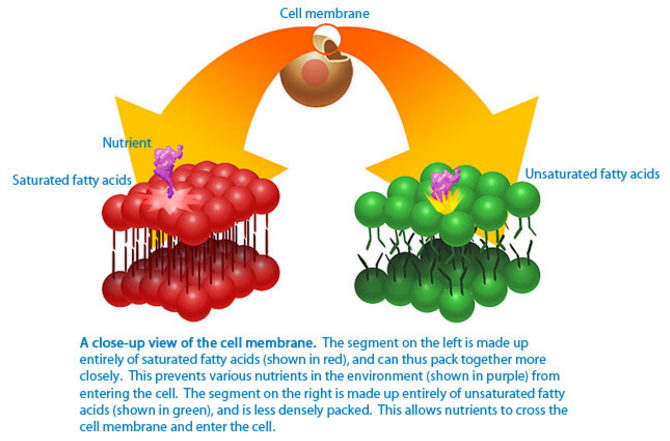Decreased membrane fluidity and altered susceptibility to peroxidation and lipid composition in overweight and obese female erythrocytes
Roberta Cazzola 1 ,*, Mariangela Rondanelli † , Samantha Russo-Volpe*, Ettore Ferrari † and Benvenuto Cestaro*
*Department of Preclinical Sciences “LITA Vialba,”, University of Milan via G. B. Grassi, 74-20157 Milan, Italy
†Department of Internal Medicine and Medical Therapy, School of Endocrinology and Metabolism and Chair of Geriatrics, “Istituto Santa Margherita,” University of Pavia, Piazza Borromeo, 5-27100 Pavia, Italy
1To whom correspondence should be addressed. e-mail: roberta.cazzola@unimi.it
Next Section
ABSTRACT
The increased generation of reactive oxygen species that occurs in the condition of obesity may be responsible for oxidative injury to erythrocyte membranes, which could lead to a decrease in tissue oxygenation. Therefore, we have looked into the effects of obesity on both indexes of oxidative damage and physical-chemical properties of erythrocyte membranes in 50 overweight or obese [25 < body mass index (BMI) < 33], normotensive, nondiabetic women and 50 age-matched lean healthy women (BMI < 25). In the obese group compared with the lean group, we found that a) the onset of free radical-induced erythrocyte hemolysis and the ratio between reduced and oxidized glutathione were reduced, whereas the rate of free radical-induced damage increased; b) the n-3 fatty acid and the phospholipid contents decreased; c) the ratio between cholesterol and phospholipids increased; and d) the membrane fluidity decreased.
These findings suggest an impairment of erythrocyte membrane physical-chemical properties in overweight and obese people as a consequence of oxidative injury that might be part of a pathogenetic mechanism responsible for obesity-related pathologies such as atherosclerosis and hypertension.
Physiological oxidative metabolism and neutrophil activation occurring in the blood give rise to oxygen-reactive substances and other very active radical species that can irreversibly damage the surrounding macromolecules. In particular, these radicals can attack both the amino and thiol groups of proteins and the double bonds of polyunsaturated fatty acids in lipoproteins. Statistically significant correlations have been found between lipoprotein susceptibility to peroxidation, the degree of obesity, and the risk of developing cardiovascular disease (1). Because any increase in the rate of lipoprotein peroxidation not only diminishes their levels of polyunsaturated fatty acids but also consumes and reduces their antioxidant contents (vitamin E, β-carotene, coenzyme Q, etc.), the consequence of these biochemical events in overweight and obese people is also a probable reduction of the “exchange rate” of both polyunsaturated fatty acids and lipophilic antioxidants that are normally transferred in the blood from the donor lipoproteins to the erythrocyte acceptor membranes. A decrease in both the degree of polyunsaturation of lipids and the antioxidant levels of the erythrocyte membrane could thus be expected, together with a decrease of both membrane fluidity and the activity of its membrane-bound enzymes. Because the erythrocyte membrane serves as a variable barrier to oxygen transport, the changes in its composition can induce cellular hypoxia in the tissue bed. Furthermore, because the size, shape, and diffusion capacity of a red blood cell depend on the structure of its membrane, alterations in membrane structure could lead to a decrease in tissue oxygenation (2). Such modifications of oxygen available in cardiovascular cells might be part of a pathogenetic mechanism responsible for obesity and obesity-related pathologies such as atherosclerosis and hypertension. To our knowledge, the physical-chemical properties of the erythrocyte membrane in overweight and obese people have not been thoroughly investigated. With the aim of providing more detailed information on these properties, we performed the following study in which we measured the susceptibility to peroxidation, the lipofuscin levels, the fluidity, the activity of ATPase and acetylcholinesterase, and the cholesterol and fatty acid compositions of the erythrocyte membrane in two adult female groups: overweight and obese patients and lean healthy subjects. The correlations between all of these indices of erythrocyte antioxidant status, the lipid profile, the activity of ATPase and acetylcholinesterase, membrane fluidity, and the most significant anthropometrics and chemical-clinical parameters were also calculated, and on this basis, their possible contributions to the etiopathogenesis of both obesity and obesity-related cardiovascular pathologies are discussed.
Decreased membrane fluidity and altered susceptibility to peroxidation and lipid composition in overweight and obese female erythrocytes http://www.jlr.org/content/45/10/1846.full

.png)
.png)